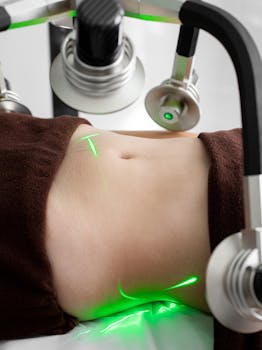The world of laser and cosmetic treatments holds a captivating allure for those seeking to enhance their appearance and improve skin quality. Whether you’re interested in reducing wrinkles, minimizing scars, or rejuvenating your skin, understanding the different types of cosmetic lasers can help you make informed decisions and achieve your aesthetic goals.
Understanding Laser and Cosmetic Procedures
Laser and cosmetic treatments encompass a variety of procedures aimed at enhancing the skin’s appearance. These treatments use focused light beams to address various skin concerns, from acne scars to pigmentation issues. The technology has evolved significantly, offering more precision and reduced recovery times compared to traditional methods.
Types of Cosmetic Lasers
There are several types of cosmetic lasers, each suited for different skin conditions and desired outcomes. Below are some of the most common types:
- Ablative Lasers: These lasers work by removing the thin outer layer of skin, promoting collagen production which leads to smoother and tighter skin. They’re effective for wrinkles, scars, and sun-damaged skin.
- Non-Ablative Lasers: Less invasive than ablative lasers, these penetrate deeper into the skin without removing the top layer. They are often used for mild wrinkles and pigmentation issues.
- Fractional Lasers: This technology divides the laser into thousands of tiny beams to treat a fraction of the skin at a time. This allows for quicker recovery while effectively addressing wrinkles, pigmentation, and texture concerns.
- Pulsed-Dye Lasers: Ideal for targeting redness, these lasers use a concentrated beam of light to treat vascular issues such as broken capillaries and rosacea.
Laser and Cosmetic Treatment Recovery
Recovery time varies depending on the type of laser used and the individual’s skin type. Generally, ablative laser treatments require more downtime as the skin needs to heal from the layer removal. Patients might experience redness and swelling for a few days to a few weeks.
Non-ablative laser recovery is relatively quick, with most people resuming their regular activities almost immediately. However, it’s important to protect your skin from sun exposure during the healing process to avoid complications.
For more detailed information on enhancing your skincare routine, you can read our article on transforming your skincare routine with the latest breakthroughs.
Expected Results from Cosmetic Lasers
The results of laser and cosmetic treatments vary by individual and the condition being treated. Many people report significant improvements after just one session, but multiple treatments are often recommended for optimal results.
Results are generally long-lasting, especially with proper skincare and sun protection. For maintenance, occasional touch-up sessions might be required, depending on the type and severity of the skin issue.
Considerations and Risks
As with any medical procedure, there are risks to consider. Potential side effects include temporary redness, swelling, and skin irritation. It’s crucial to consult with a qualified healthcare provider or dermatologist to discuss your goals and any potential risks.
Those considering cosmetic lasers should ensure that the treatment is performed by a certified and experienced professional. This helps to maximize benefits and minimize risks.
Conclusion: The Future of Laser and Cosmetic Treatments
As technology advances, laser and cosmetic treatments continue to grow in popularity, offering more effective and less invasive options for skincare enhancement. Whether you’re aiming to reduce blemishes or rejuvenate your skin’s appearance, these procedures provide promising possibilities.
For those interested in these treatments, it’s important to consult with a dermatologist to explore options tailored to individual needs. To learn more about laser technology and its applications, feel free to visit this comprehensive health resource.
- Laser and cosmetic treatments can address a variety of skin concerns.
- There are several types of cosmetic lasers with varying recovery times.
- Consult with a certified professional to assess suitability.
- Protect treated skin from the sun post-procedure.
- Multiple sessions may be necessary for ideal results.
FAQ
What is the difference between ablative and non-ablative lasers?
Ablative lasers remove the outer layer of skin to promote regeneration, suitable for more severe skin issues. Non-ablative lasers penetrate deeper without skin removal, used for minor conditions.
How long does it take to recover from a laser treatment?
Recovery can range from a few days to weeks, depending on the laser type, with non-ablative lasers typically requiring less downtime than ablative lasers.
Are cosmetic laser treatments painful?
The level of discomfort varies per individual and treatment type. Numbing creams or cooling devices are often used to minimize discomfort during the procedure.
Can all skin types benefit from laser treatments?
Most skin types can benefit, but the type of laser and post-care will vary based on skin tone and condition. Some lasers are more suitable for certain skin types.
How do I know which laser treatment is right for me?
A consultation with a licensed dermatologist or skincare professional can help determine the most appropriate laser option based on your skin goals and type.






